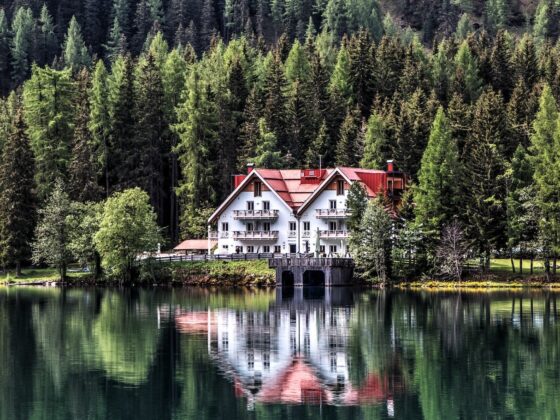Having a house sitting on the market can be expensive and stressful. Find out some common reasons a house won’t sell and what you can do to attract buyers.
When you put your home on the market, you never really know how long it will take to sell. In some markets, you may have five full-price offers within 24 hours. In others, your home may sit for weeks. If you’re in the “my house won’t sell” camp, here are some things to consider.
Why Isn’t My House Selling?

There are several reasons your home sale may be stalled. Here are some of the most common scenarios:
1. Priced Too High
Even if everything about your house is on point, if it’s priced incorrectly for the market, it’s not going to sell. “Probably 70% of the time a house isn’t selling is primarily price,” said Spencer Rivers, a top real estate agent in Calgary. For example, “you think your home is worth $200,000 and the average days on the market is 15. You price it at $200,000, and after 15 days on the market, you haven’t gotten an offer even though people have looked at it. Your price is wrong.”
To fix this, you’ll have to lower your price. Consult a real estate agent on this issue, because they’ll have a better idea of what’s selling in your area and how your price compares to other homes with similar specs.
2. Too Personalized
You might be really proud of your collection of clown figurines, but buyers may not see it the same way. Your buyers should be able to picture themselves in the home, and that’s more difficult if you’ve left out all your family photos and sentimental knick-knacks. It’s advisable for sellers to clear everything that they’re not using. Since you are going to be moving anyway, you’re better off starting that packing and decluttering process upfront.
3. Poor Layout

Sometimes a home’s layout simply isn’t ideal for many buyers—and you might not even realize it because you’ve gotten used to it. Maybe there’s no obvious primary suite, or one of the bedrooms is located off the dining room or living room. Maybe there’s no bathroom on the first floor.
Whatever the trouble, this is generally a difficult problem to fix without major renovations, so you’ll have to decide whether you want to spend big money or just wait for the right seller to come along. A price drop can help overcome this issue since a buyer can do their own renovations.
4. Not Updated
If your home is still sporting fixtures from the 1950s—and not in a cute, vintage way—it could be turning buyers off, especially if the homes in your area are all up-to-date. Updated appliances, updated fixtures and updated furnishings all go a long way toward making a house sell.
If you’re not willing to spend money on this issue, you’ll need to drop the price to reflect the work a buyer might want to do on the home. But you can do a few things yourself that might help. You can update a few key lighting pieces for very little money—your dining room, your foyer, your kitchen pendants.
5. Bad Staging
How your home is presented to buyers makes a big difference. That means cleaning, patching, painting, freshening things up, and getting all excess clutter and furniture out. Staging makes a huge difference, and we include this with every listing because of the difference it makes. It’s advisable to create a detailed list of every piece of furniture that needs to come out of the house.
Staging is about making your home feel clean, fresh and welcoming. Turn on all the lights, bake some cookies, set the dining table and put fresh flowers on the kitchen table. When buyers open the door, they’ve got to feel at home.
6. Bad Listing Photos

If the publicity photos for your home don’t make it look clean, bright and uncluttered, you may want to have them retaken. Dark photos are a deal-breaker, as are pictures that include house clutter or the less picturesque features of the home (like closets).
Make sure your photos are taken on a bright, sunny day, and that you’ve appropriately cleaned and decluttered beforehand.
If your listing agent can’t do this, hire someone who can, or use a photographer who knows how to make your photos look great in any light. If you’ve got a house that has tricky lighting, or you’ve got some rooms that are coming in really dark, get a photographer who can edit the photos to really pull the light.
7. No Curb Appeal
You might have the greatest house on the block—on the inside—but if your yard is unkempt or featureless, your paint is peeling, and your front walk needs work, a buyer might pass right by.
If you can’t get people inside, they’re never going to buy it. Clean the windows, put in flowers and shrubs, update the mailbox, and paint if necessary. If you’re not able to paint everything, paint the trim and the shutters. It has to be consistent with the neighbourhood.
8. Tough Location
If your home is on a busy street, or it’s got a stream or creek on the property, or the property rises from front to back—such that the backyard becomes a cliff —it becomes a hard property to sell. Things like that are really hard to overcome.
To sell that kind of home, you’ll either have to drop the price or wait for the right buyer to come along—or both.
9. Market Timing

When you put your home on the market can make a difference. For instance, in many markets, spring is a popular time to shop for homes, because families want to close on the home and move before the next school year starts. If you put your home on the market in the fall, it may sit for a while.
Talk to a real estate agent about the optimal time to list your home.
10. Difficult Owner
It may be time for some introspection: Could you be the problem? Are you turning down showings because the timing isn’t convenient for you? Some sellers have issues with showing their houses to strangers. If you’re not prepared to show your home, take your home off the market. You’re better off putting it on the market when you have a few weeks where you know you’ve got the flexibility to be able to show it.
Another tip: If you get a showing request and it’s a time that doesn’t work for you, don’t just decline it. Suggest another time. Let the buyer know you’re trying to work it out.
How the Market Affects Home Sales
Even if you’ve made all the right moves and your home is in great shape, it still may sit on the market if sales in your area are slow. If it’s a slow seller’s market where you live, that’s going to be reflected in all home sales, not just yours. You have to look at how quickly other houses around you are selling. If everything is sitting and you need to sell, the price has got to be reflective of that, and you have got to have the ‘wow’ factor.”
What to do if you still can’t sell your house
If you’ve made all the updates you’re willing to make, you’ve staged your home, you’re being flexible about showings, and it’s still not selling, you’ll have to make some decisions. Are you willing to drop the price further to entice buyers? And have you really tried your hardest?
You have to get aggressive about price. You need to put an apple pie in the oven, you’ve got to get really creative and try to make your house stand out, and you’ve got to take advantage of every showing that you get.
Sometimes sellers get worn out by multiple showings with no offers, and they stop making as much effort, but you’ve got to keep putting your best house foot forward.
That said, if it’s been weeks and there’s very little market activity, and you’re not willing to put money into renovations or drop the price further, you may have to take the home off the market and try again at a better time. You’re not doing it any justice by letting the days on the market tick up.



